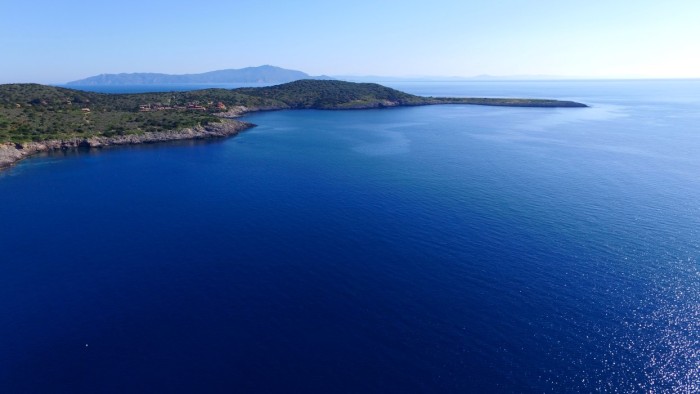Food, Food, Glorious Food
Central Mediterranean We’ve had several friends ask us to write a food blog during our travels, but we...

Whenever we move Berkeley East from place to place, to anchorages or marinas, on the mainland or around islands, there are many things to consider. Distance, weather, depth, protection, navigational hazards are just a few. Each passage, regardless of how short, is carefully planned prior to departure. And while we have cruising guides and electronic charts, unexpected challenges arise quickly on a boat so there is nothing more reliable than a good set of eyes monitoring the situation.


Lying between the French island of Corsica and the Italian Tuscan coast, the Tuscan Archipelago contains seven little gems of earth, each unique in character and history. The islands of Pianosa, Montecristo, Gorgana, Giglio, Giannutri, Elba and Capraia are all protected lands as part of the Arcipelago Toscano National Park. Local legend says that when Venus rose from the waves, seven precious stones fell from her tiara creating these seven majestic spaces. The fable is poetic, as are the islands and their graceful, romantic beauty.


Because it is a designated national park, the archipelago presents a tedious navigational process for boats like Berkeley East. In order to help preserve the environment, vessels are required to use specific channels that wander sometimes miles out of the way, and take hours longer, rather than following the more direct, shorter path between islands. While frustrating, it is understandable, so we wove BE through the marked zones keeping within park regulations.


We had not heard much about the Italian island of Giglio, but for the tragedy of the Costa Concordia. In 2012 the 952-foot cruise liner ran aground just off Giglio’s shore and came to rest at the entrance of the main harbor. She carried 3,229 passengers and 1,023 crew; many souls were lost that night. Once an isolated utopia that attracted birdwatchers and hikers, Giglio immediately became the epicenter of the largest-ever maritime salvage operation in the world, and a site of “disaster tourism” with the curious coming to take photos of the mammoth sprawled on the rocks. It took three years to right and remove the enormous ship; many more to detach and take away all the salvage implements put in place for the operation.


As we approached the island, we could easily see the rocks that the cruise ship hit. We gave them a wide berth and found a spot to anchor Berkeley East in the beautiful bay next to the port. While we had seen the photos, it was still difficult to imagine the 114,000-ton vessel blocking the entrance to this peaceful harbor, and impossible fathom that a careless navigational error caused this paradise to become a source of such pain and sorrow.

The harbor was a bevy of activity; a ferry full of cars, buses, trucks and people had just arrived. Giglio typically has about 1,000 residents, but the population swells in the summer months, so much so that the number of automobiles allowed in from the mainland are limited. The local bus was packed with people from all over the world, but the walk around Giglio Castello, the medieval village, was oddly quiet.


Even more forsaken, the tiny island of Giannutri was a ghost island this time of year, but for the birds. Often referred to as Isola dei Gabbiani (Seagull Island), Giannutri is a nesting site for a variety of migratory birds. They were definitely nesting, and swarming, and pooping on Berkeley East and the dinghy.


They were also attacking the drone, which the raucous fowl clearly saw as either a potential mating partner, or more likely a threat. A bit of creative flying, through the pack of squawking birds, was needed to get the drone back on BE feather free.

The island is largely privately owned, with no cars and no major tourism. People come for the nature, and the seclusion. In summer, the birds are replaced by an exclusive group of wealthy Italians. Our guidebook suggested that if one were fortunate enough to secure a rare holiday rental, they should bring their own essentials like sunscreen and water.


Our final stop in the Tuscan Archipelago was the island of Elba. The weather forecast had not predicted rain, but there we were steering BE to dodge constant ferry traffic, in a steady downpour, as we entered the main harbor. Elba is the biggest island in the archipelago, and the third largest island in Italy surpassed in size by Sardinia and Sicily. It is famous around the world for harboring French Emperor Napoleon in 1814 during his exile, but Elba’s roots go back to ancient times.

Berkeley East had circumnavigated Elba before, so this trip was about us exploring the island’s interior. But the heavy precipitation and seemingly endless black clouds shrouding the island made hiking a less-than-desirable plan.

So we waited, for days, watching ferries come and go. During one six-hour period, we counted 30 different ferries traverse through the harbor; Elba is not only one of the largest Italian island, but also one of the busiest.

When the skies finally cleared, our time was up so we had to abandon the idea of discovering Elba on foot. As we returned to BE from a quick meal on shore, we came across a cruise ship being towed off the dock by a small tugboat. But once clear, the cruise ship continued to back up before the line attached to the small boat was released, a questionable move that nearly caused the little vessel to capsize. Fortunately, crisis was ultimately averted.
